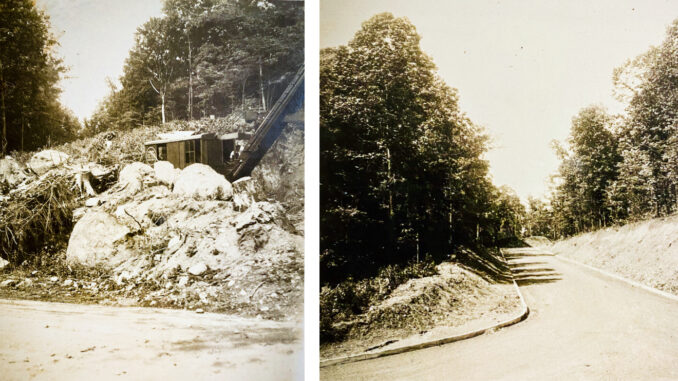
TOWNSHIP OF WASHINGTON—Before the 1930s, road maps of the Township of Washington looked a lot different. The vast majority of today’s side streets did not yet exist; instead, they were covered in forest, marshes, and farmland that would not be developed, in most cases, until the 1950s.
On the south side of town, Pascack Road stopped at Ridgewood Road (next to present-day Bacari Grill) and did not meet up with Linwood Avenue. On the north side, if you were coming from the direction of Westwood, Washington Avenue stopped at Pascack Road, creating a “T” next to where Seasons is today.
In 1931, the Township of Washington took on a major project to have Washington Avenue extended west from Pascack Road to the Ho-Ho-Kus border, thereby creating a new east-west route through the region.
The photographs on this page show the portion of Washington Avenue where it crosses Van Emburgh Avenue and goes up the hill toward Ho-Ho-Kus. Van Emburgh, shown in the foreground, had already existed for many years, the path being an old farm lane named for one of the region’s founding families. That portion of Washington Avenue, on the other hand, was essentially an impassable wilderness.
Local men were employed in the construction, which provided some relief in those days of widespread unemployment during the Great Depression. As you can see, they had their work cut out for them. The workers felled trees using two-man saws, getting paid $4 a day for their labor.
Around the same time, Van Emburgh went from a dirt road to a paved one. One local newspaper (we cannot be sure which one, as we have only the clipping with no title) had this to say:
“For years a lowly dirt road, Van Emburgh Avenue in Washington Township is about to enter the high society of paved roads. To properly celebrate the grooming of this modest country lane for its coming debut as a modern highway, a large group of residents living along the road marked the start of construction on Thursday afternoon with a noisome ceremony.”
(That part about a “large group of residents” requires some context. About 400 people lived in the entire township at the time.)
The report continued, “The township folks roused the countryside by setting off blasts of dynamite. After all the years of being handicapped by having only a dirt road upon which to reach the better highways, the people on Van Emburgh Avenue are happy over the prospect of enjoying a hard-surfaced thoroughfare.”
